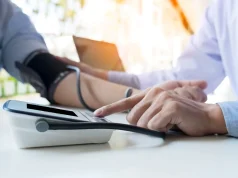The American Society of Hypertension 31st Annual Scientific Meeting & Exposition
The annual meeting of the American Society of Hypertension was held from May 13 to 17 in New York City and attracted more than 17,000 participants from around the world including clinicians, academicians, allied health professionals, and others interested in high blood pressure management. The conference highlighted recent advances in the prevention, detection, and treatment of hypertension and related cardiovascular conditions, as well as in the pathobiology of hypertension.
In one study, George Bakris, M.D., of the University of Chicago, and colleagues found that the use of a single-pill combination (SPC) of valsartan/nebivolol for the management of stage I or II hypertension was safe and more effective than using either agent alone.
“The use of the SPC of valsartan and nebivolol provided greater blood pressure reduction as recorded by 24-hour ambulatory blood pressure monitoring than use of the maximal dose of either agent alone,” Bakris said. “This better blood pressure control with the SPC occurred regardless of stage I or stage II hypertension. Tolerability of the SPC was slightly better than either agent alone.”
The study was funded by Allergan, the manufacturer of valsartan/nebivolol.
Abstract No. LB-P-21
In another study, John Purakal, M.D., of the University of Illinois at Chicago, and colleagues evaluated patients presenting to the emergency department with two elevated blood pressure readings (stage II hypertension), and categorized them based on their chief complaint. The investigators aimed to observe the trends in how emergency department physicians inform, educate, and refer hypertension patients based on if the original complaint was related or not.
The investigators evaluated three groups of patients, including those who presented to the emergency department specifically for elevated blood pressure or to be evaluated (BPCC), those who presented with symptoms that could be related to cardiovascular disease (CDCC), and those with non-cardiac complaints (NCC).
“We found that emergency department physicians were significantly better at informing, educating, and refilling medications for the BPCC group than the other two groups. While that seems intuitive, the most alarming thing is that the CDCC group, which may have underlying cardiovascular disease or origins to their complaints, were not adequately informed, educated, or given appropriate follow-up, much like the NCC group,” Purakal said. “We will attempt to program a notification for our physicians so that patients who are considered moderate or high risk who have elevated blood pressure in the emergency department will not be able to be discharged until certain parameters regarding discharge instructions, discharge diagnoses, follow-up, and medication refills are met.”
Abstract No. LB-P-23
Wisit Cheungpasitporn, M.D., of the Mayo Clinic in Rochester, Minn., and colleagues, found a significant association between daytime napping and hypertension, with an overall 1.17-fold increased risk of hypertension.
“Our meta-analysis of nine observational studies with 112,267 individuals demonstrates a significant association between daytime napping — greater than 30 to 60 minutes per day — and hypertension, with an overall 1.17-fold increased risk of hypertension,” Cheungpasitporn said. “The data on association between nighttime napping in individuals who work night shifts and hypertension were limited. An observational study reported reduced risk of hypertension in nighttime nappers, with an overall 0.79-fold reduced risk of hypertension.”
According to Cheungpasitporn, previous studies have reported associations between napping and cardiovascular disease. Thus, it is possible that the deleterious cardiovascular effects of napping are inducing hypertension.
“This finding may impact the prevention and clinical management of hypertension. Future studies are required to evaluate the potential benefits of hypertension screening for daytime nappers,” Cheungpasitporn said. “In addition, more studies are needed to evaluate if diet, exercise, or an underlying medical condition, might be impacting risk of hypertension in daytime nappers.”
Abstract P-57
ASH: Studies Support Aggressive Treatment of HTN in Elderly
MONDAY, May 16, 2016 (HealthDay News) — Aggressively treating hypertension in older adults can pay off, according to new study results from SPRINT (the Systolic Blood Pressure Intervention Trial). The findings were presented at the annual meeting of the American Society of Hypertension, held from May 13 to 17 in New York City.
ASH: LV Dysfunction Up With Moderate Alcohol Intake in HTN
FRIDAY, May 13, 2016 (HealthDay News) — Even an ounce of alcohol a day might affect diastolic function in patients with hypertension, according to research presented at the annual meeting of the American Society of Hypertension, held from May 13 to 17 in New York City.
Copyright © 2016 HealthDay. All rights reserved.







